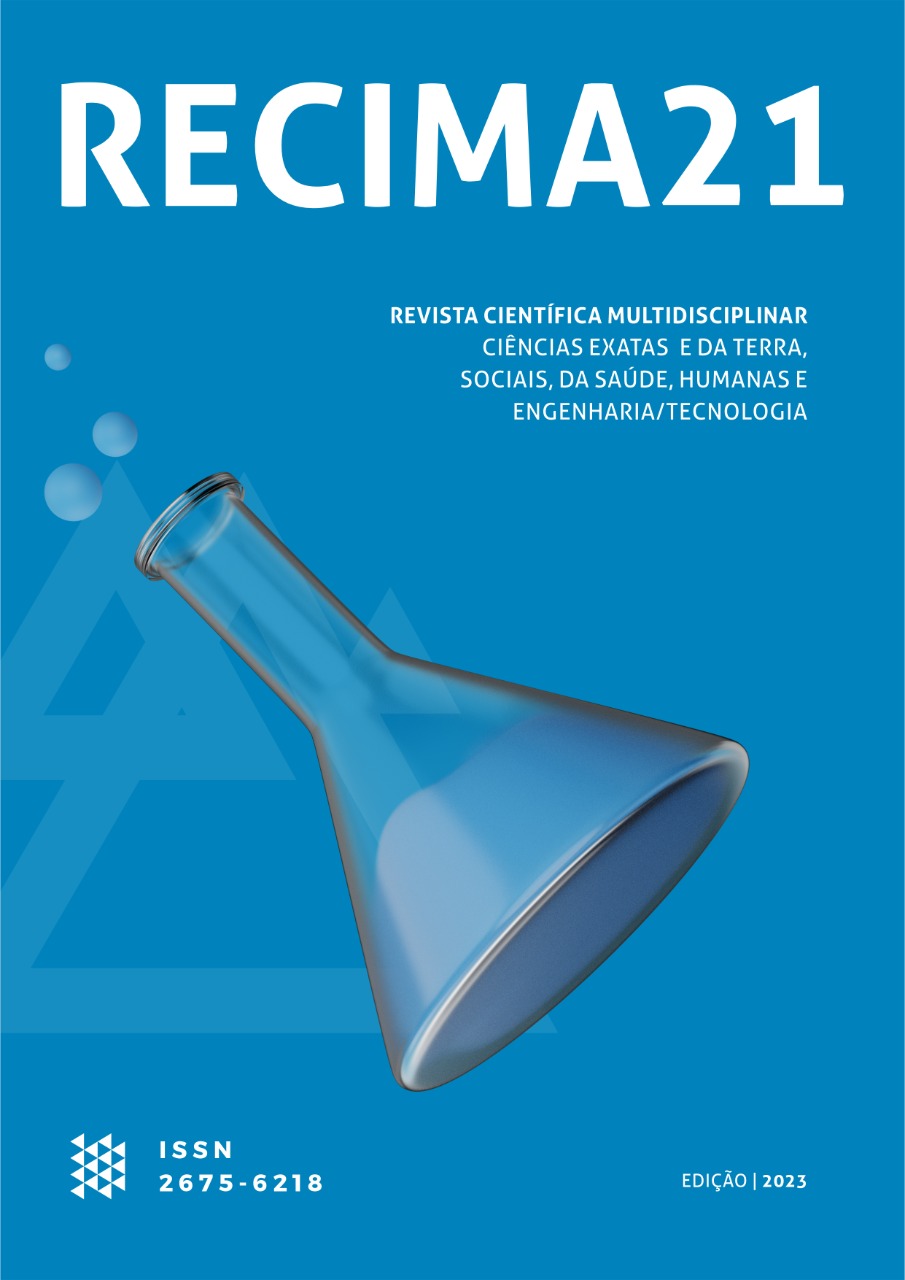UTILIZAÇÃO DA VENTILAÇÃO MECÂNICA NÃO INVASIVA DURANTE A CRISE ASMÁTICA EM ADULTOS
DOI:
https://doi.org/10.47820/recima21.v4i1.2542Palavras-chave:
Asma, Brônquica, Ventilação, InvasivaResumo
Objetivo- Avaliar os efeitos da utilização da Ventilação Mecânica Não Invasiva (VNI) no momento da crise em adultos com asma. Métodos- Foi feita uma revisão sistemática, baseada no método Preferred Reporting Items for Systematic Reviews And Meta-Analises (PRISMA). Foram incluídos estudos clínicos randomizados, caso-controle, estudos de coorte e ensaios clínicos, escritos em português e inglês, publicados entre 2017 e 2022 no site da Biblioteca Virtual em Saúde (BVS), base de dados Physiotherapy Evidence Database (PEDro) e no portal da PubMed, por meio do uso dos descritores “asthma”, “bronchial asthma”, “noninvasive ventilation”, “bipap”, “cpap” e “bilevel”. Resultados- Ao final das buscas foram incluídos 6 estudos na presente revisão Dentre os principais resultados encontrados foi possível observar que o uso da VNI ocorreu em associação com a medicação nos pacientes durante as crises de asma, e o modo ventilatório que resultou em melhores efeitos fisiológicos foi o BIPAP (programação de IPAP de 12 cm H2O e EPAP de 8 cm H2O). A utilização do modo BIPAP em conjunto com a medicação broncodilatadora promoveu diminuição do desconforto respiratório, tempo de internação e taxas de mortalidade, desinsulflação pulmonar, melhora da oxigenação e ventilação pulmonar, redução da frequência respiratória e aumento da saturação de oxigênio nesses pacientes. Conclusão- A VNI associada a medicação broncodilatadora promoveu benefícios satisfatórios em pacientes com crises de asma, melhorando os parâmetros respiratórios e reduzindo o tempo de internação e mortalidade nesses indivíduos.
Downloads
Referências
Leite M, Ponte VE, Petroni J, D'Oliveira Júnior A, Pizzichini E, Cruz AA. Avaliação do questionário de controle da asma validado para uso no Brasil. J Bras Pneumol, 2008;34(10):756-63.
Cardoso TA, Roncada C, Silva ER, Pinto LA, Jones MH, Stein RT, et al. Impacto da asma no Brasil : análise longitudinal de dados extraídos de um banco de dados governamental brasileiro. J Bras Pneumol, 2017;43(3):163-8.
Costa D, Toledo A, Silva AB, Sampaio LMM. Influence of noninvasive ventilation by bipap on exercise tolerance and respiratory muscle strength in chronic. Rev Lat Am Enfermagem, 2006;14(3):378-82.
Lanza FC, Corso SD. Fisioterapia no paciente com asma: intervenção baseada em evidências. Arq Asma, Alerg e Imunol, 2017;1(1):59-64.
Abul MH, Phipatanakul W. Severe asthma in children: evaluation and management. Allergol Int, 2019;68(2):150-7.
Daoud EG, Farag HL, Chatburn RL. Airway pressure release ventilation : what do we know ? Respir Case, 2012;57(2):282-92.
Baldursdottir S, Falk M, Donaldsson S, Jonsson B, Drevhammar T. Basic principles of neonatal bubble CPAP : effects on CPAP delivery and imposed work of breathing when altering the original design. Pesqui Orig, 2020;105(5):550-4.
Scala R. Noninvasive ventilation in severe acute asthma ? Still far from thet ruth. Respir Care, 2010;55(5):630-7.
Liberati A, Altman DG, Tetzlaff J, Mulrow C, Gøtzsche PC, Ioannidis JPA, et al. The PRISMA statement for reporting systematic reviews and meta-analyses of studies that evaluate health care interventions: explanation and elaboration. PLoS Med, 2009;6(7):1-28.
Manglani R, Landaeta M, Maldonado M, Hoge G, Basir R, Menon V. The use of non- invasive ventilation in asthma exacerbation- a two year retrospective analysis of outcomes. J Community Hosp Intern Med Perspect, 2021;11(5):727-32.
Gomes ELFD, Cavassini CLF, David MCM, Luiz JG, Santos AC, Capeletti AM, et al. Does bilevel noninvasive ventilation have a bronchodilating effect and alter respiratory mechanics in asthmatic individuals after bronchoprovocation? Randomized, crossover study. J Aerosol Med Pulm Drug Deliv, 2021;33(2):124-33.
Sheikh M, Tiruvoipati R, Hurley JH. Non-invasive ventilation of patients with acute asthma. Intern Med J, 2019;49(2):262-4.
Althoff M, Holguin F, Yang F, Grunwald G, Moss M, Vandivier W, et al. Noninvasive ventilation use in critically Ill patients with acute asthma exacerbations. Am J Respir Crit Care Med, 2020;202(11):1520-30.
Bond K, Horsley C, Williams A. Non-invasive ventilation use in status asthmaticus: 16 years of experience in a tertiary intensive care. EMA- Emerg Med Australas, 2017;30(2):1-6.
Brandão DC, Lima VM, Filho VG, Silva TS, Campos TF, Dean E, et al. Reversal of bronchial obstruction with bi-level positive airway pressure and nebulization in patients with acute asthma. J Asthma, 2009;46(4):356–61.
Downloads
Publicado
Edição
Seção
Categorias
Licença
Copyright (c) 2023 RECIMA21 - Revista Científica Multidisciplinar - ISSN 2675-6218

Este trabalho está licenciado sob uma licença Creative Commons Attribution 4.0 International License.
Os direitos autorais dos artigos/resenhas/TCCs publicados pertecem à revista RECIMA21, e seguem o padrão Creative Commons (CC BY 4.0), permitindo a cópia ou reprodução, desde que cite a fonte e respeite os direitos dos autores e contenham menção aos mesmos nos créditos. Toda e qualquer obra publicada na revista, seu conteúdo é de responsabilidade dos autores, cabendo a RECIMA21 apenas ser o veículo de divulgação, seguindo os padrões nacionais e internacionais de publicação.













